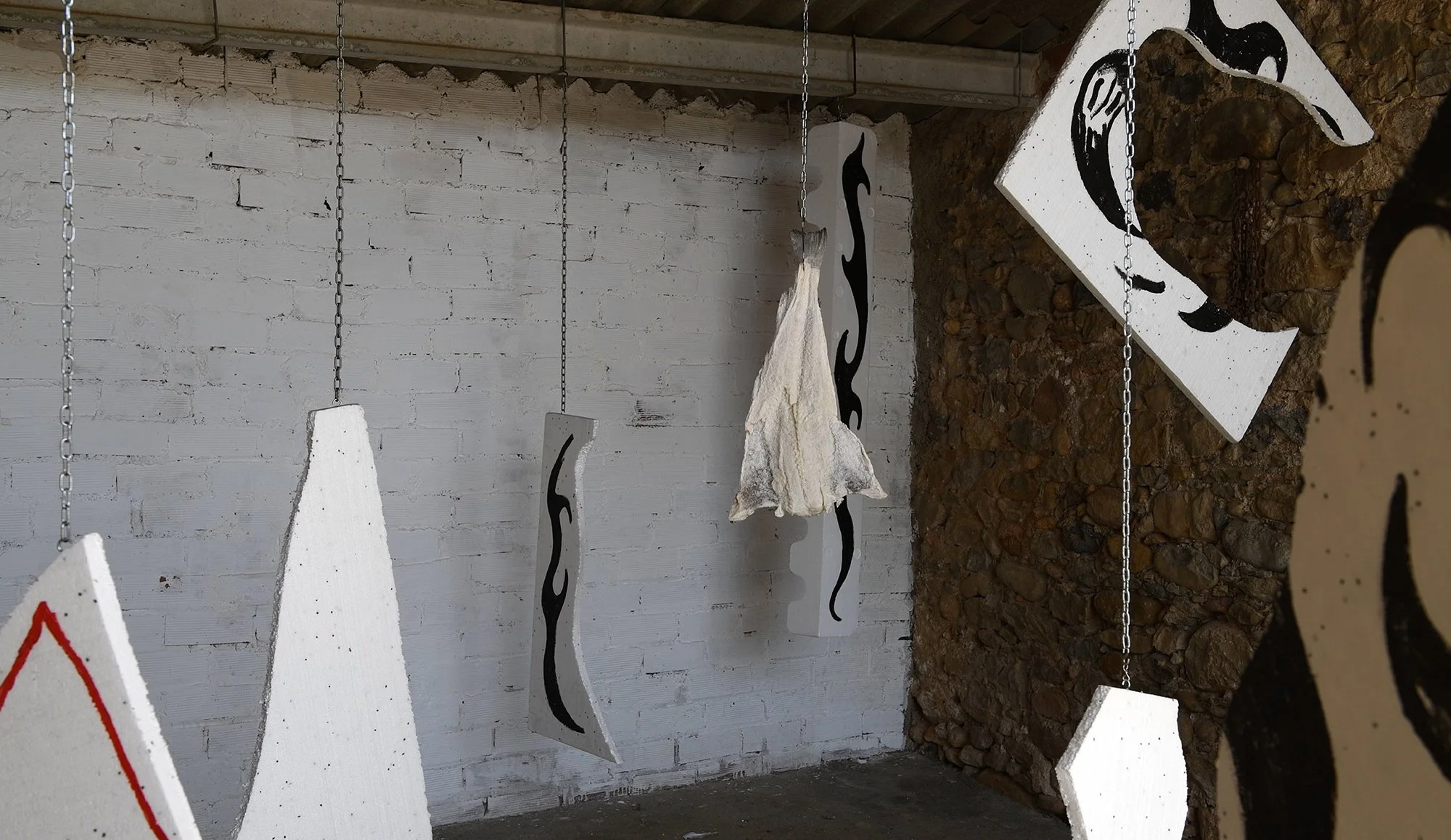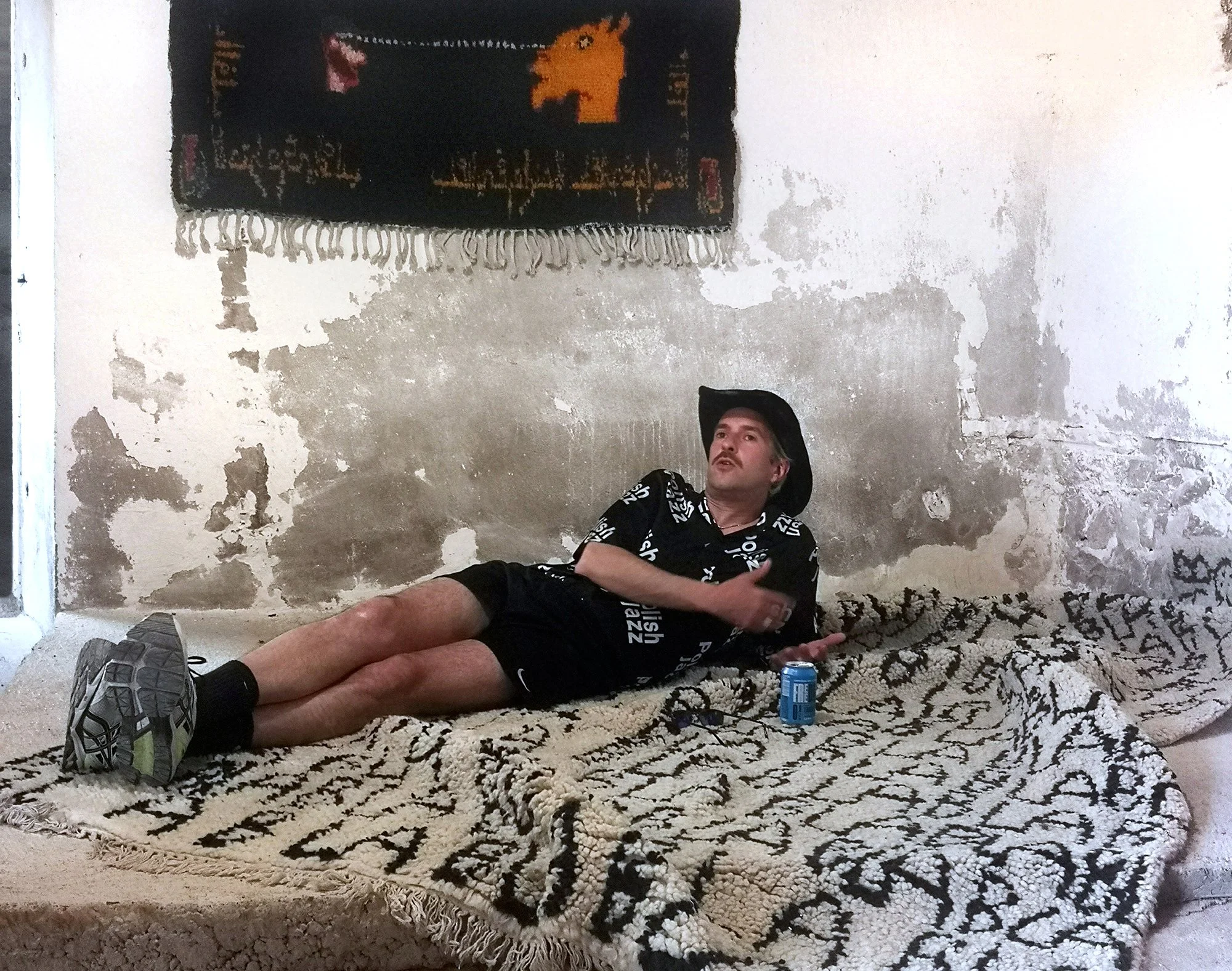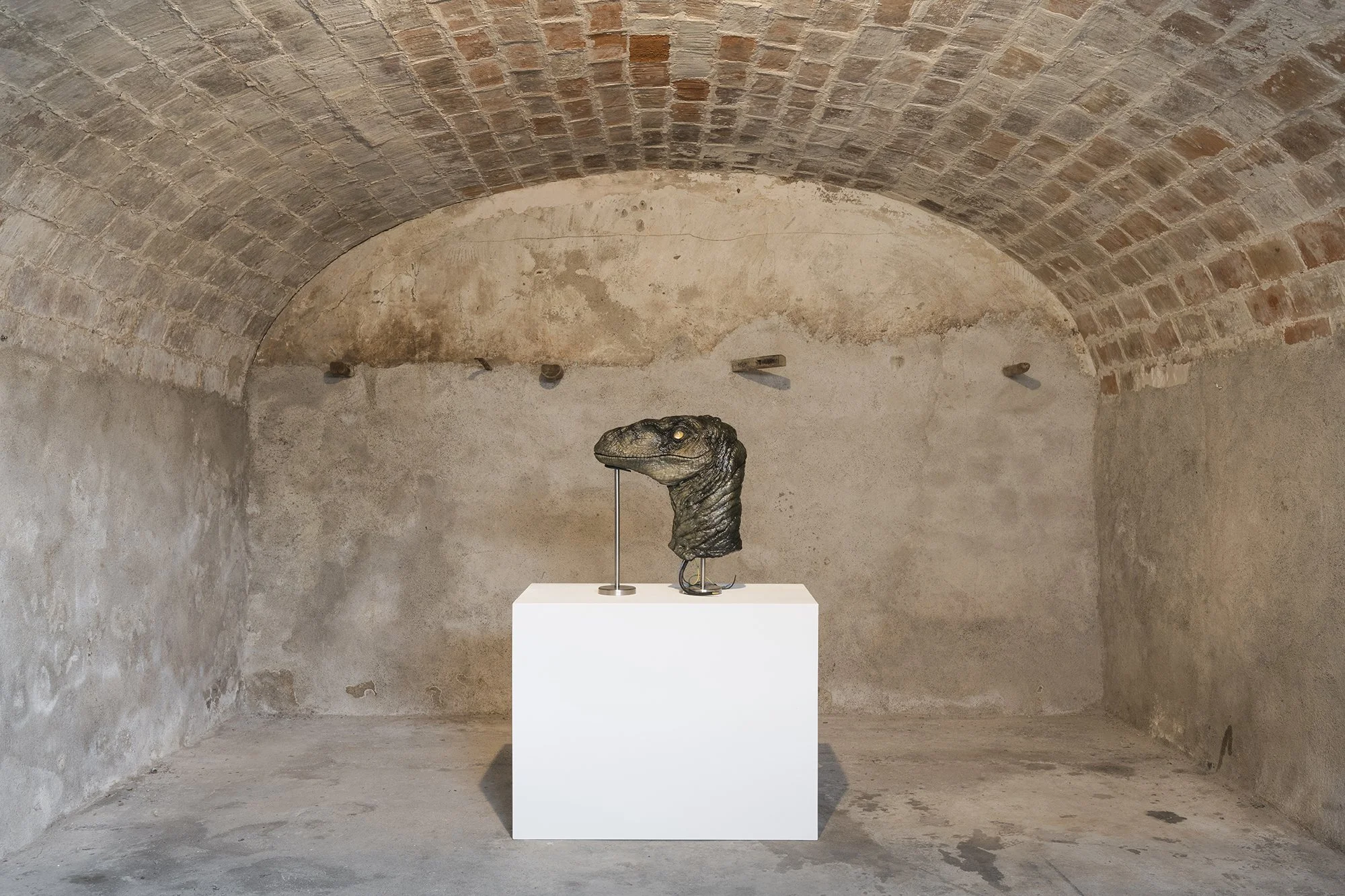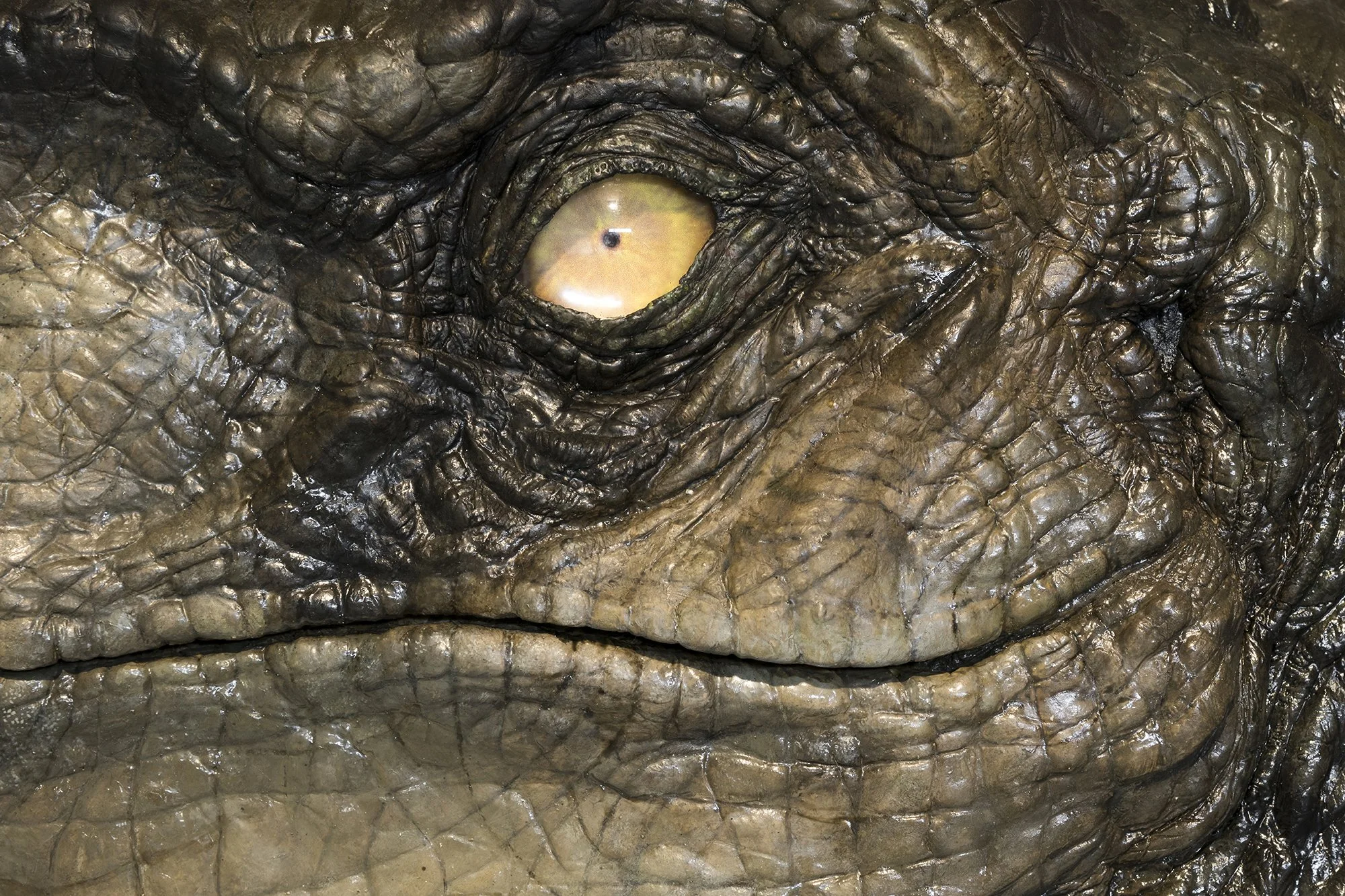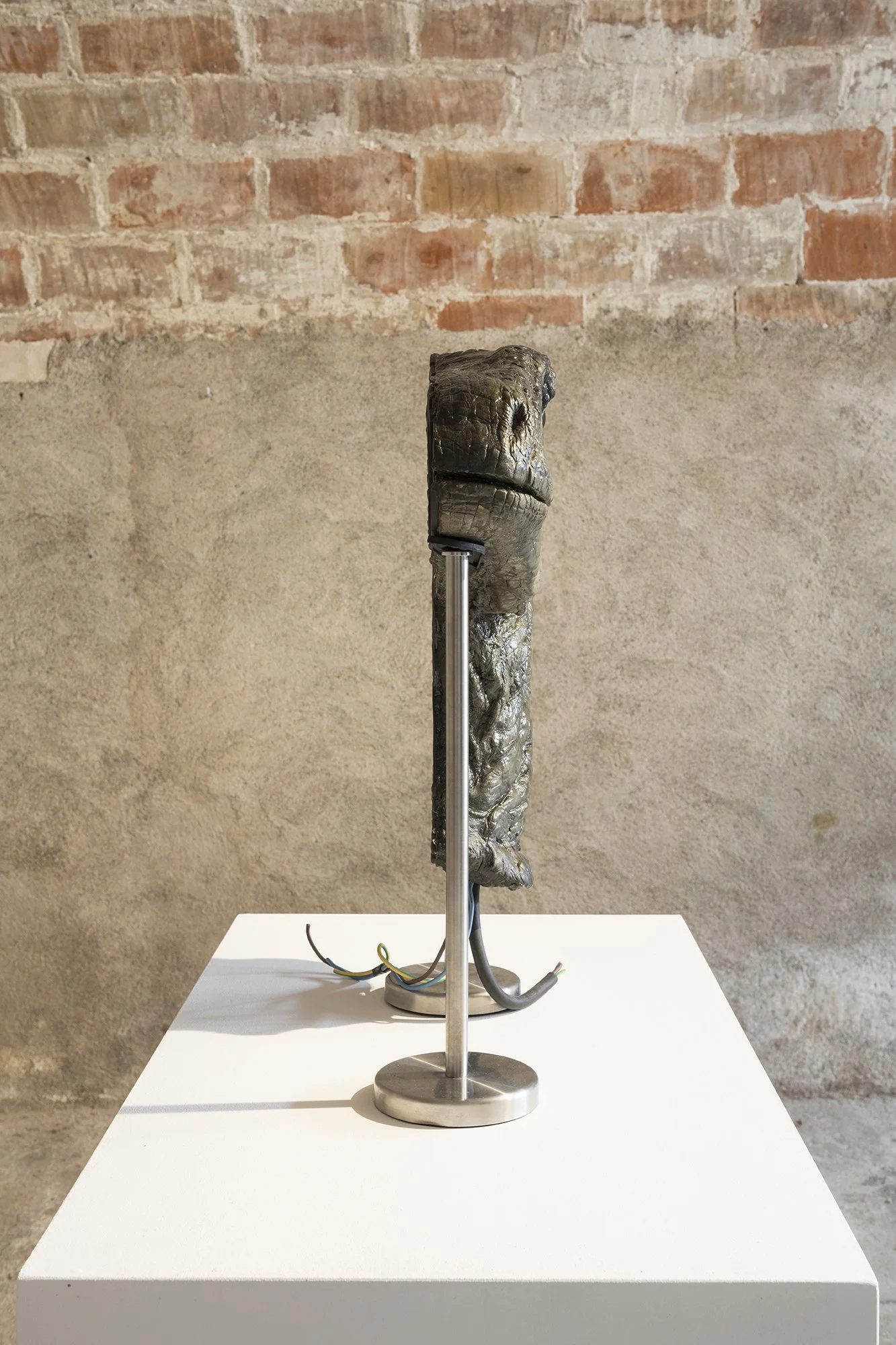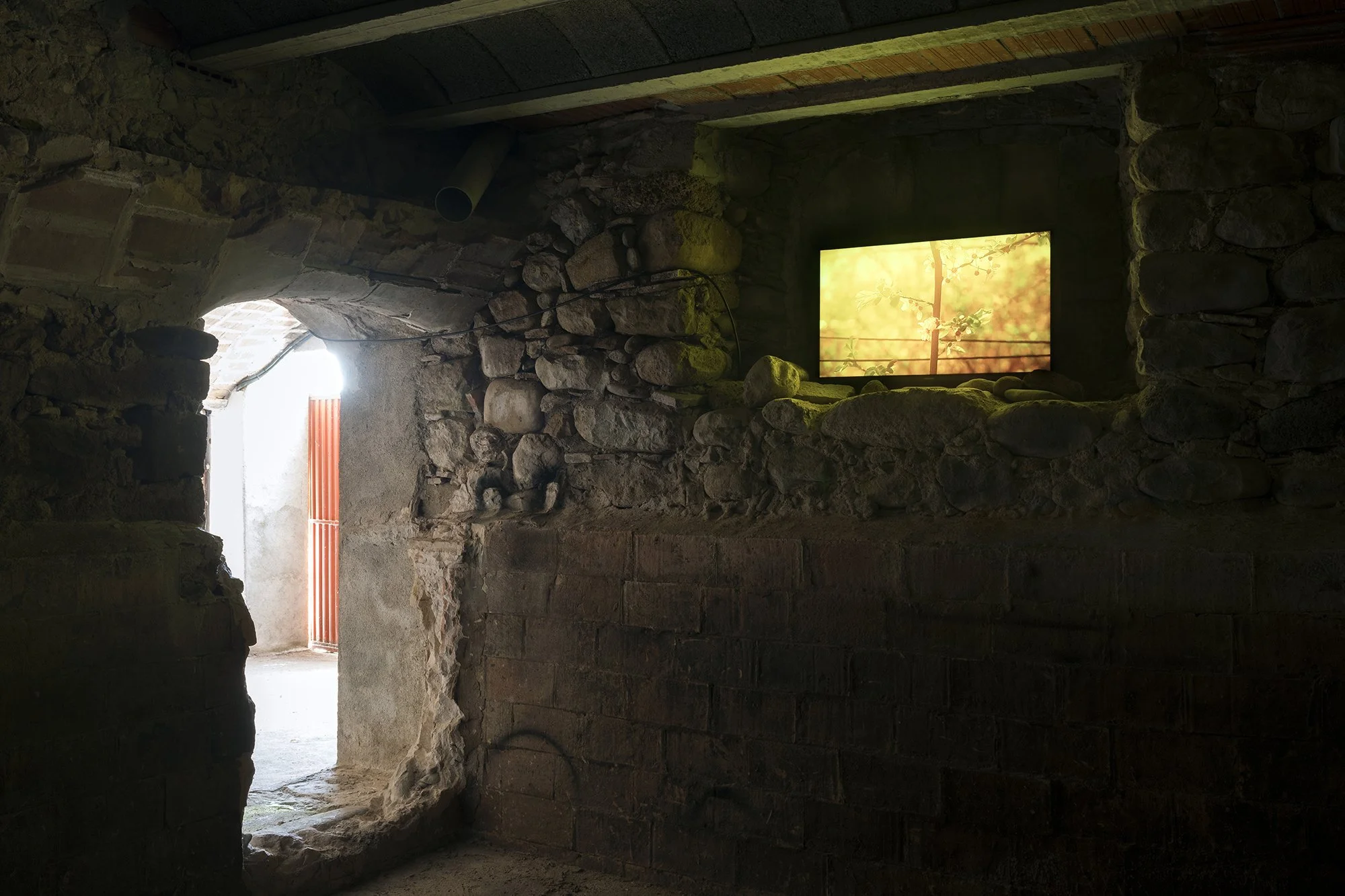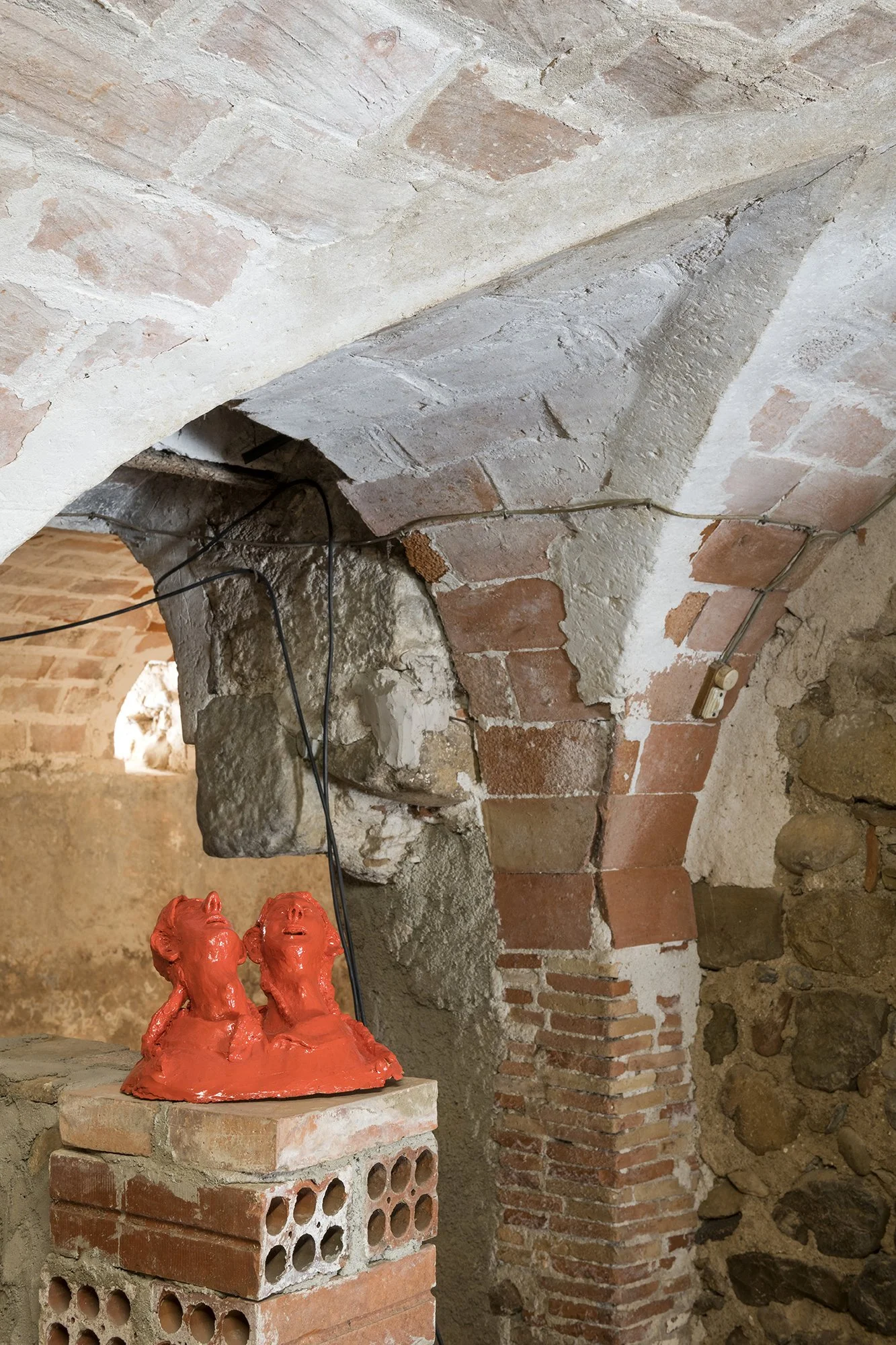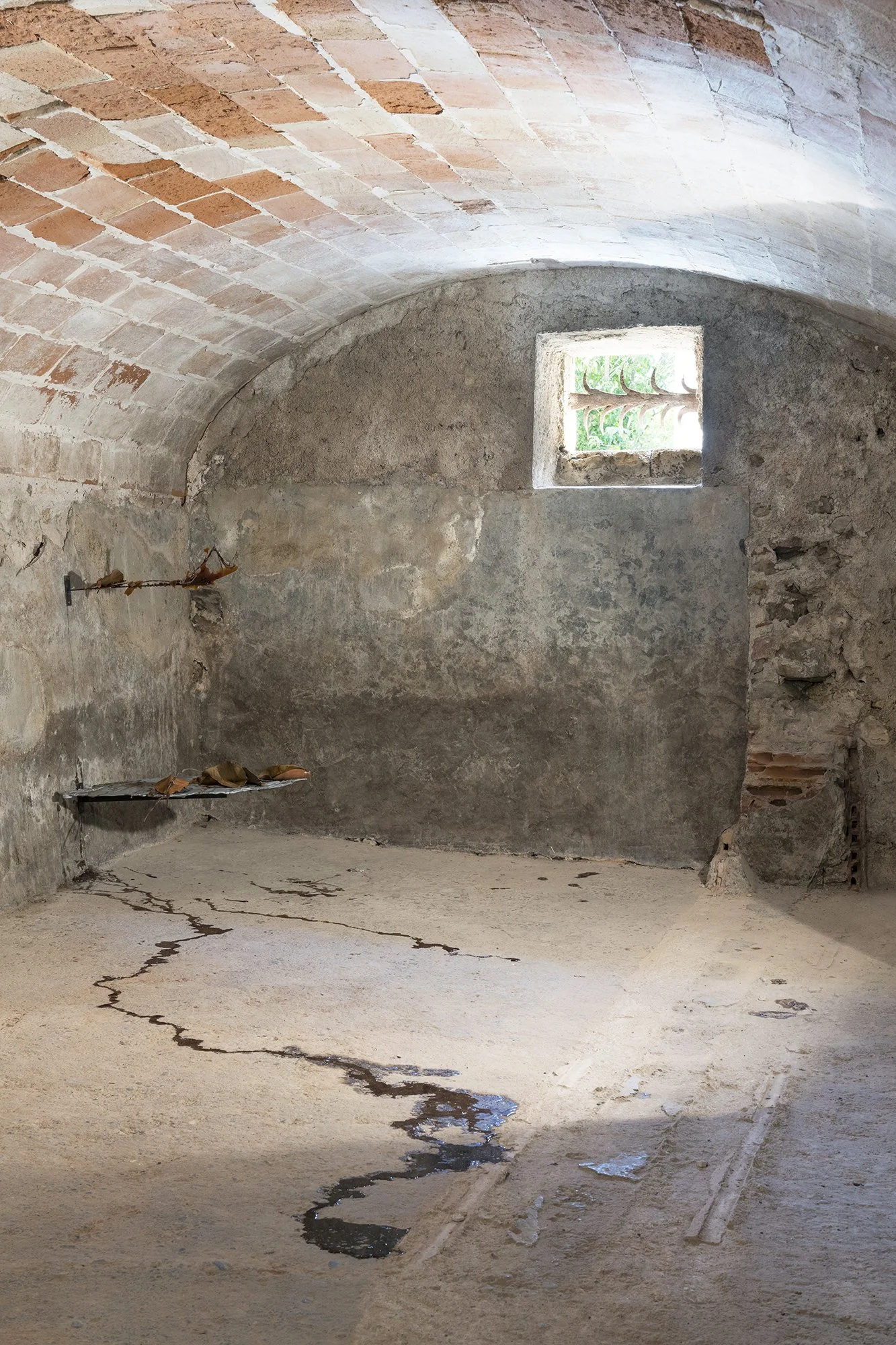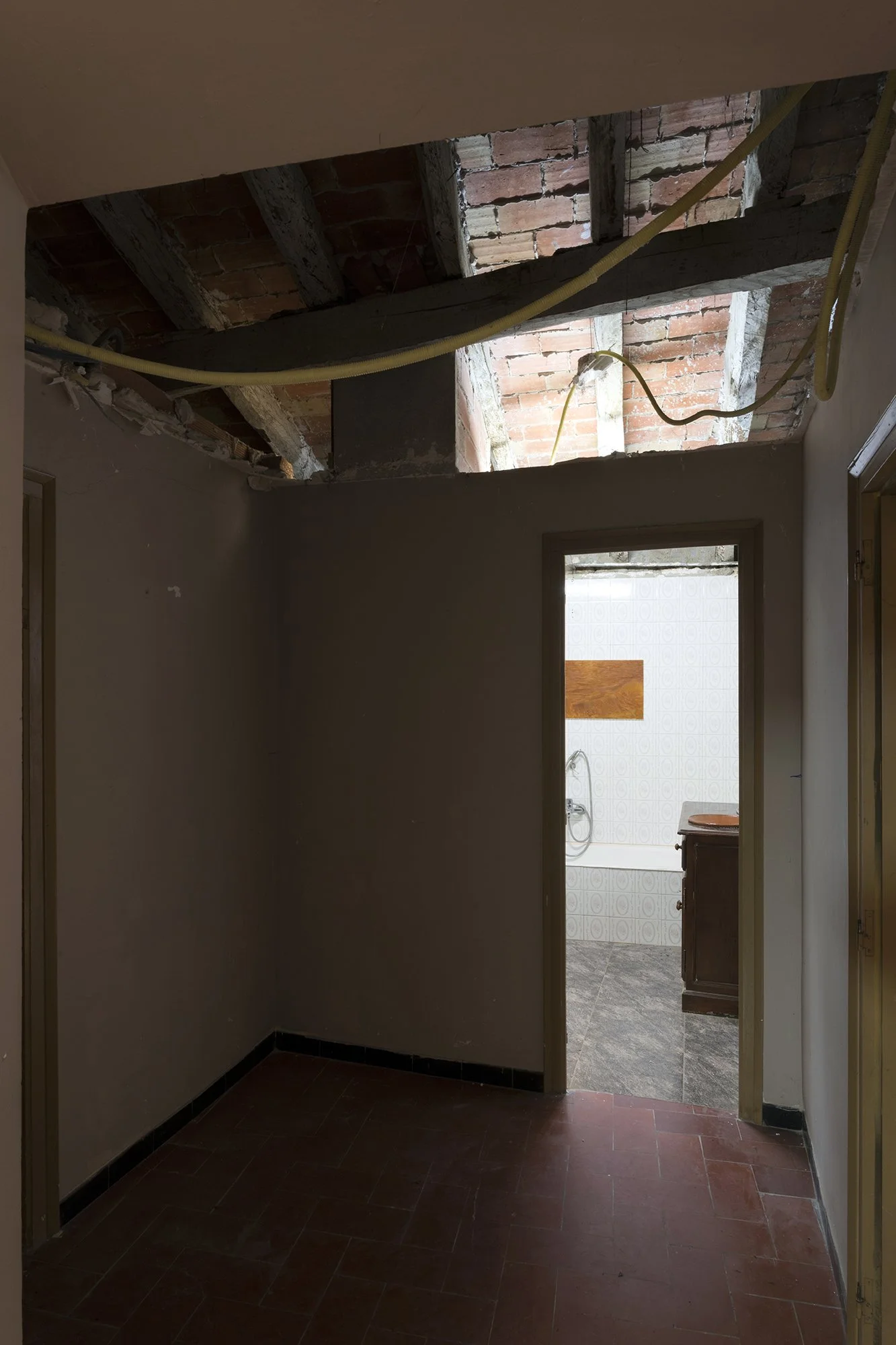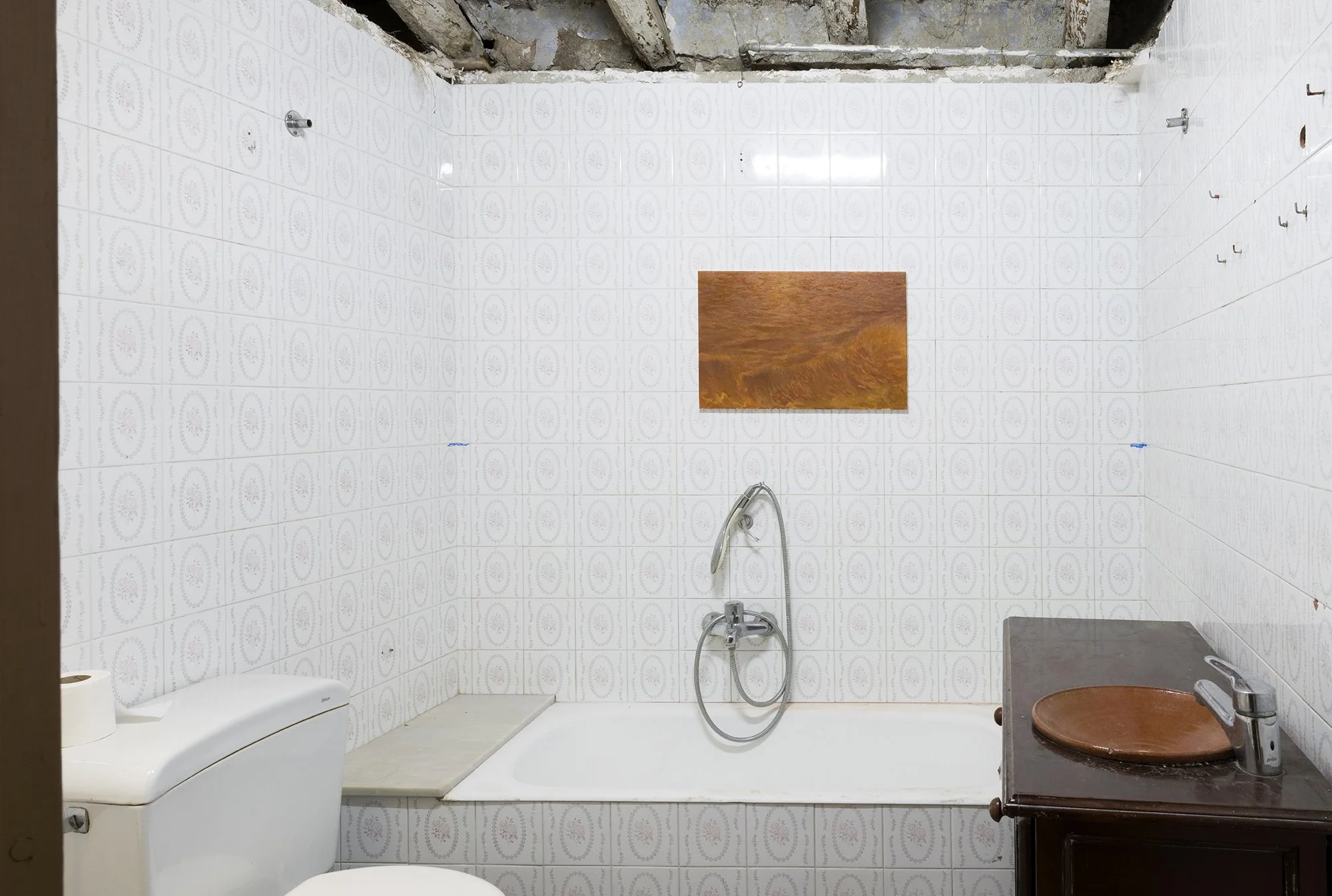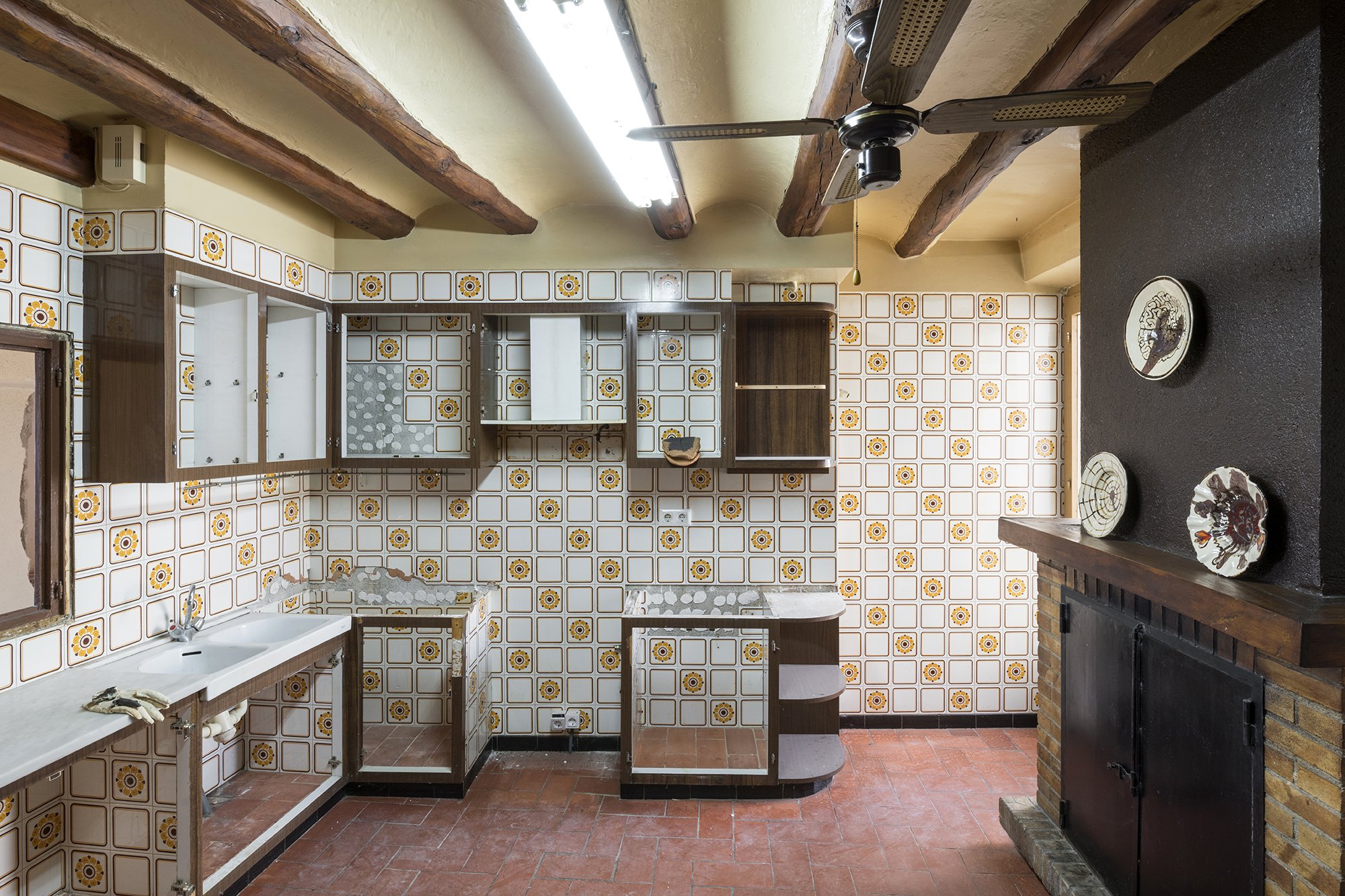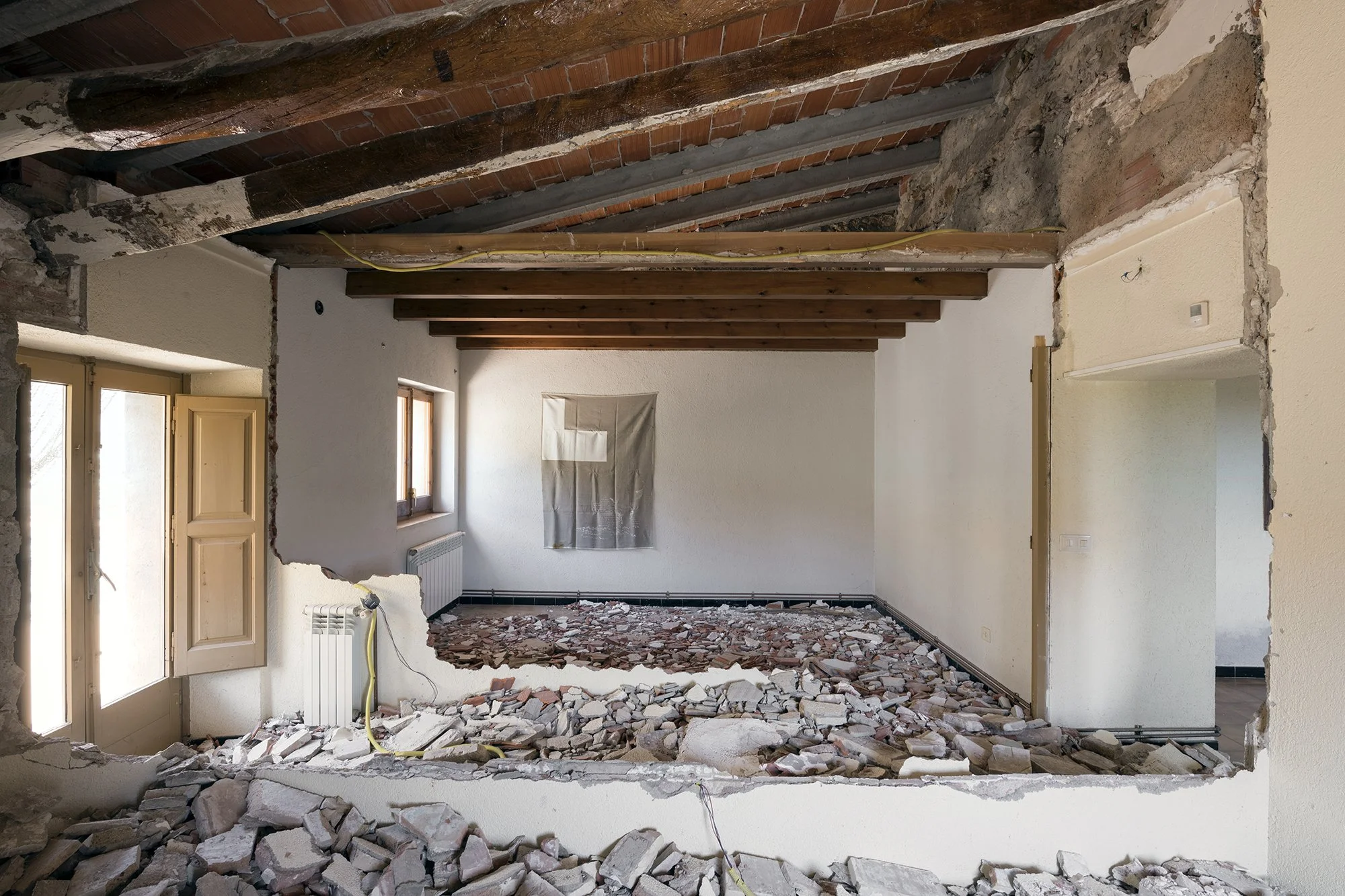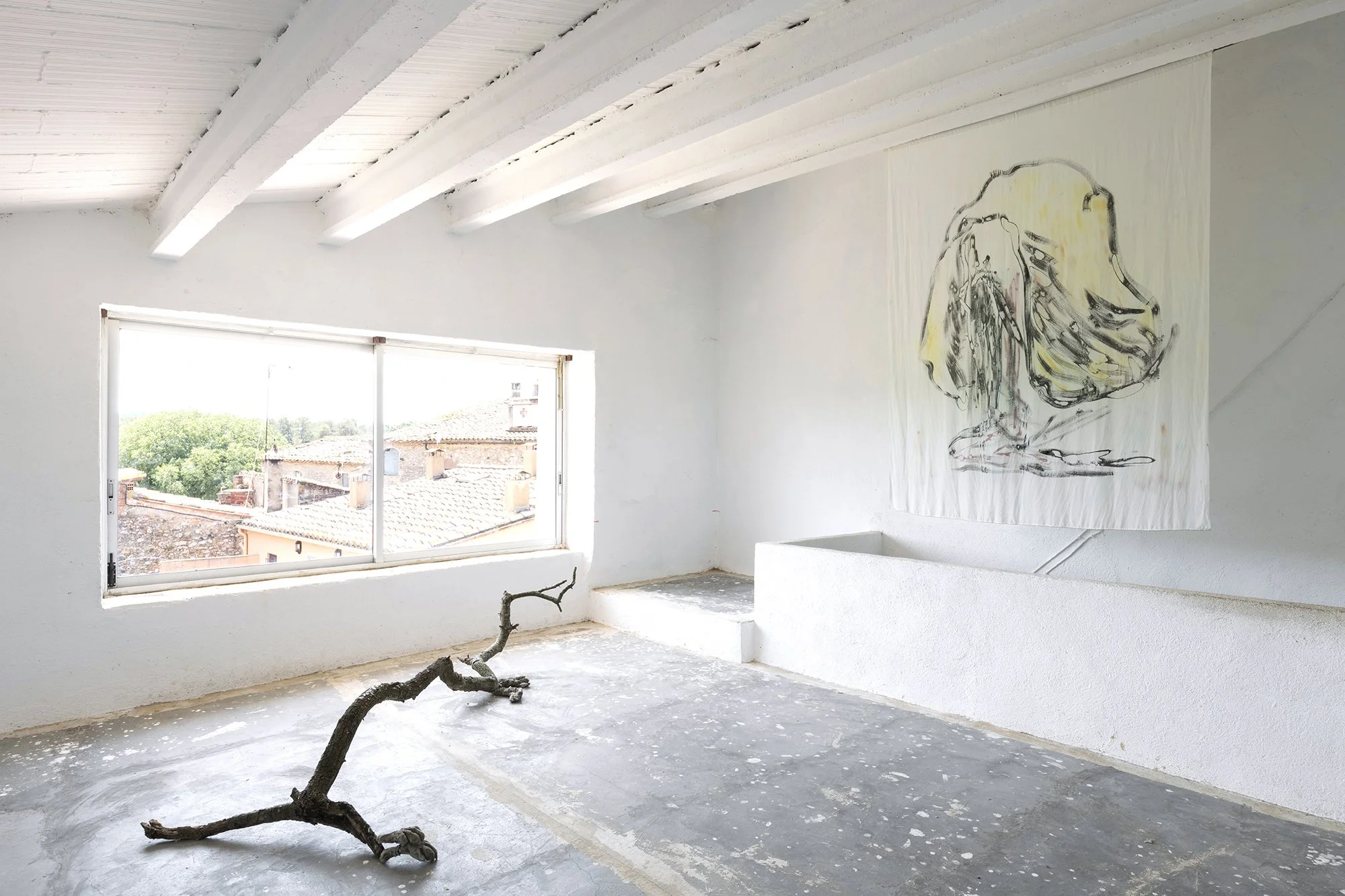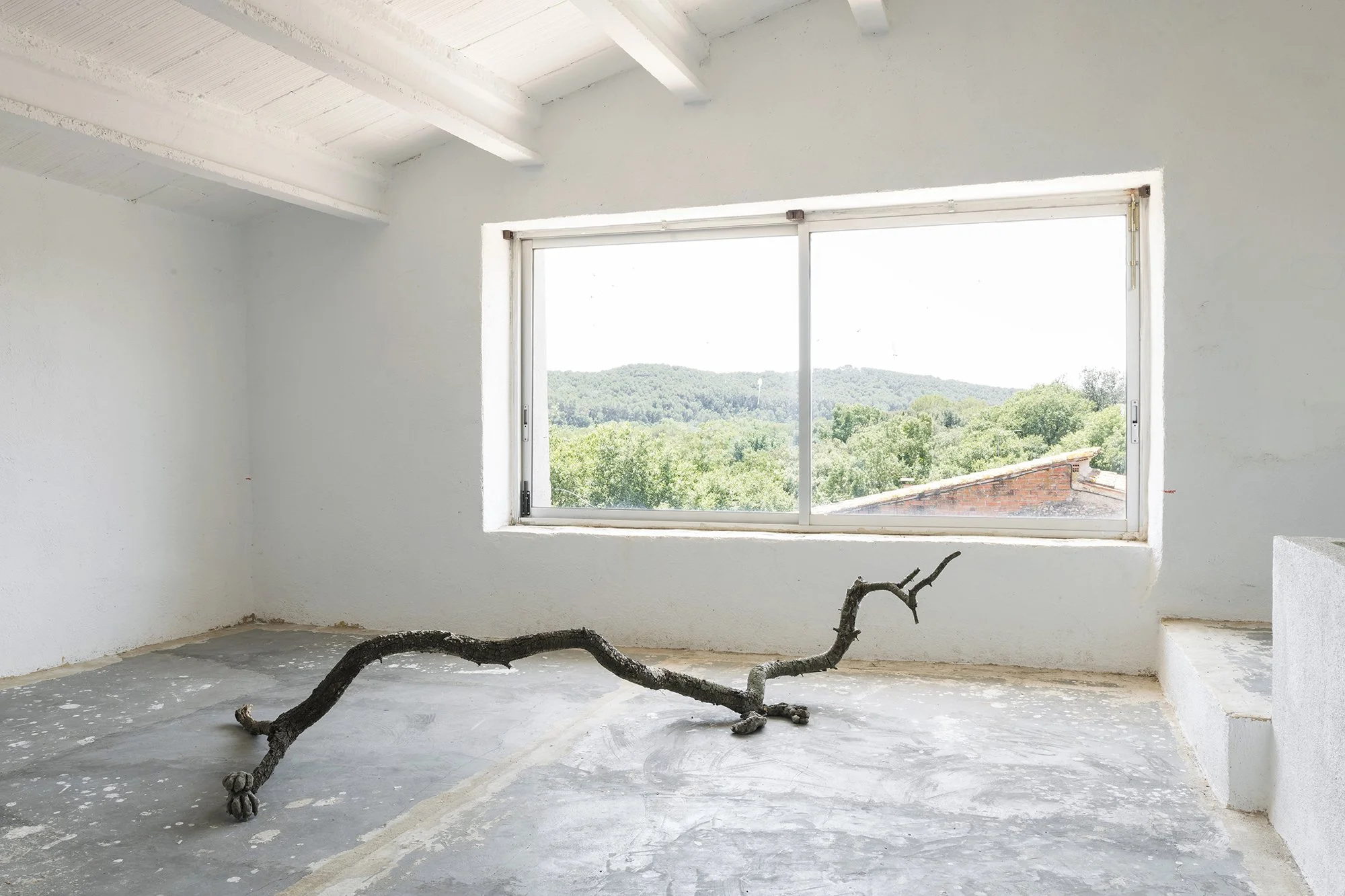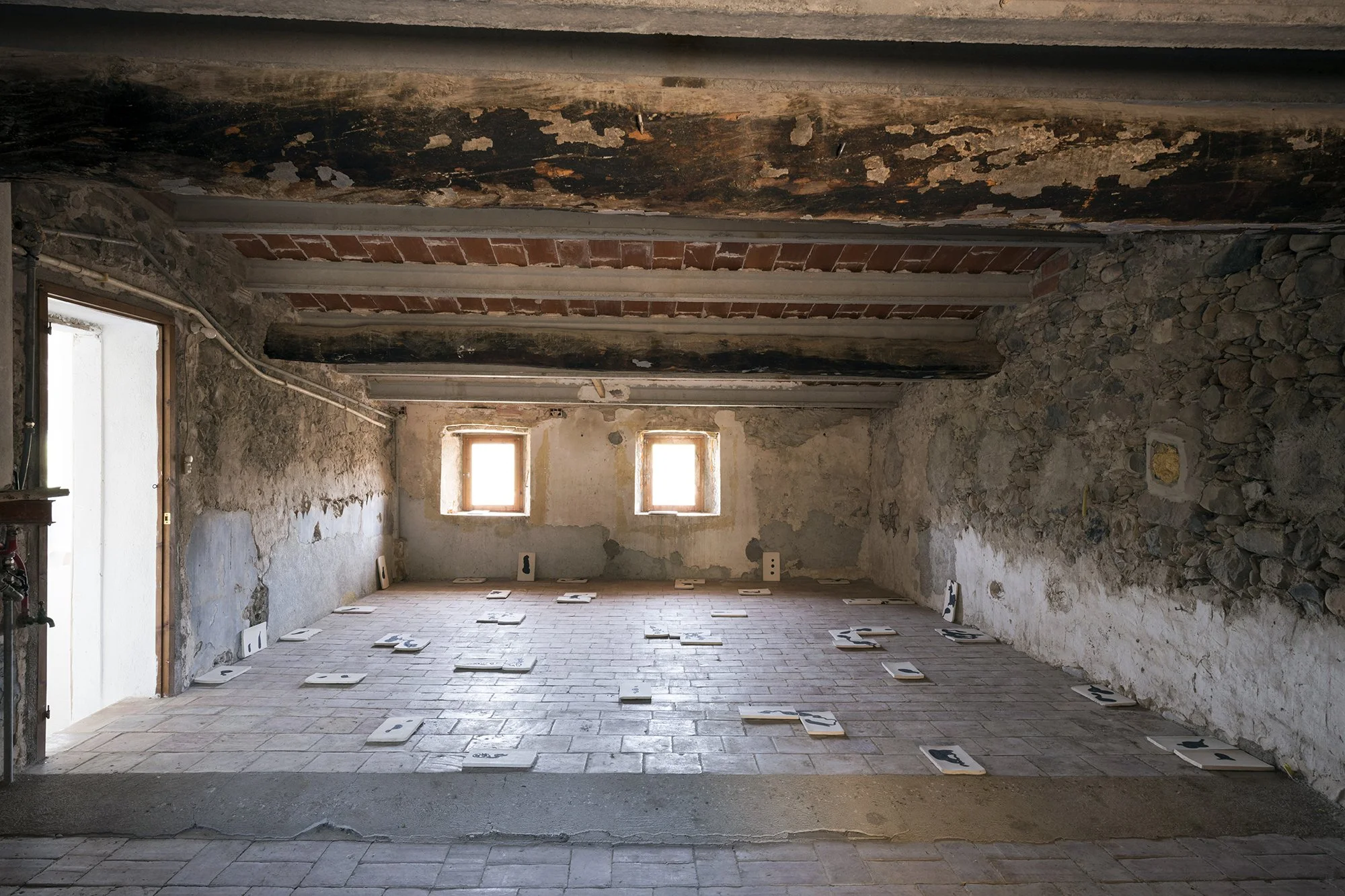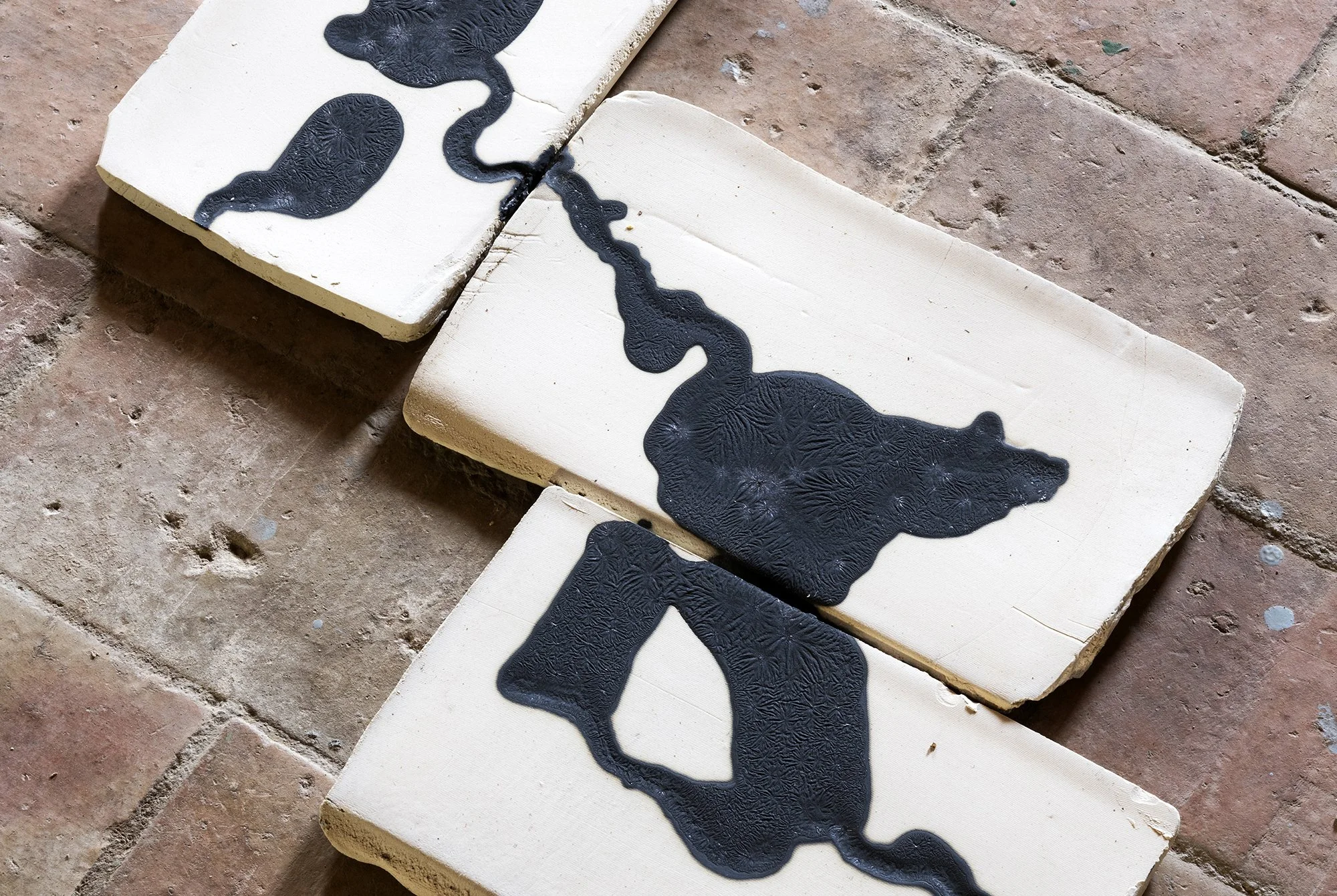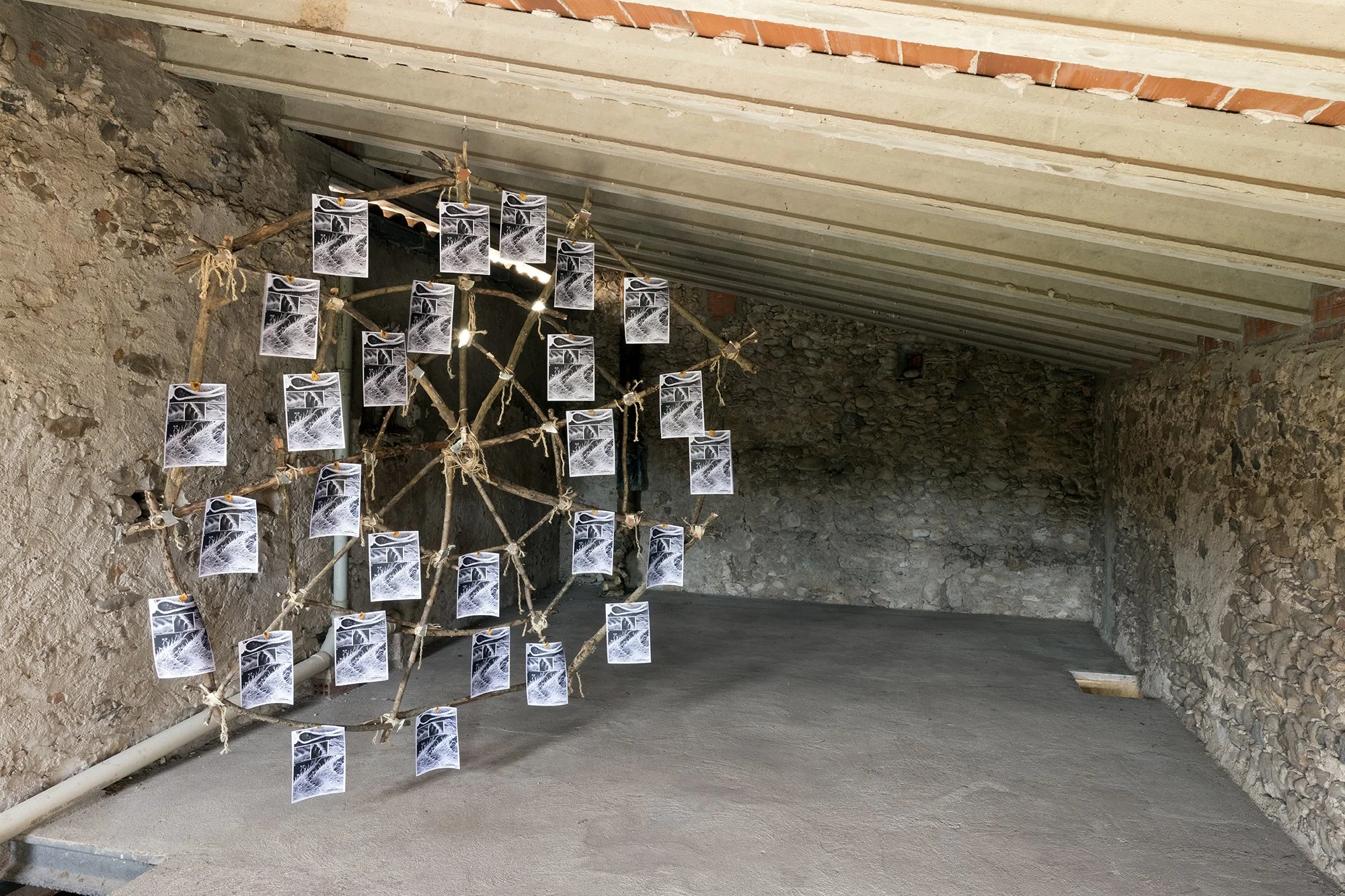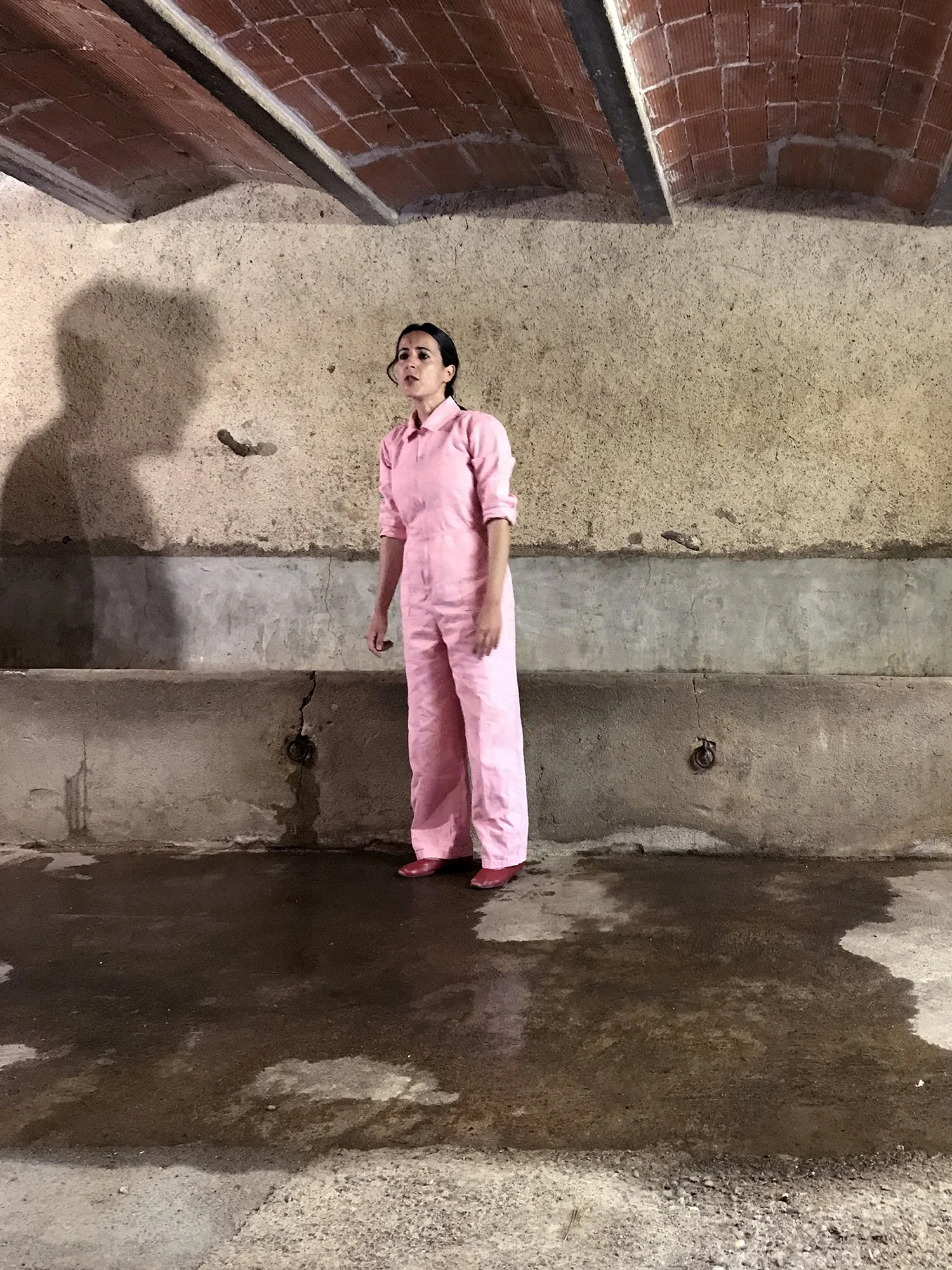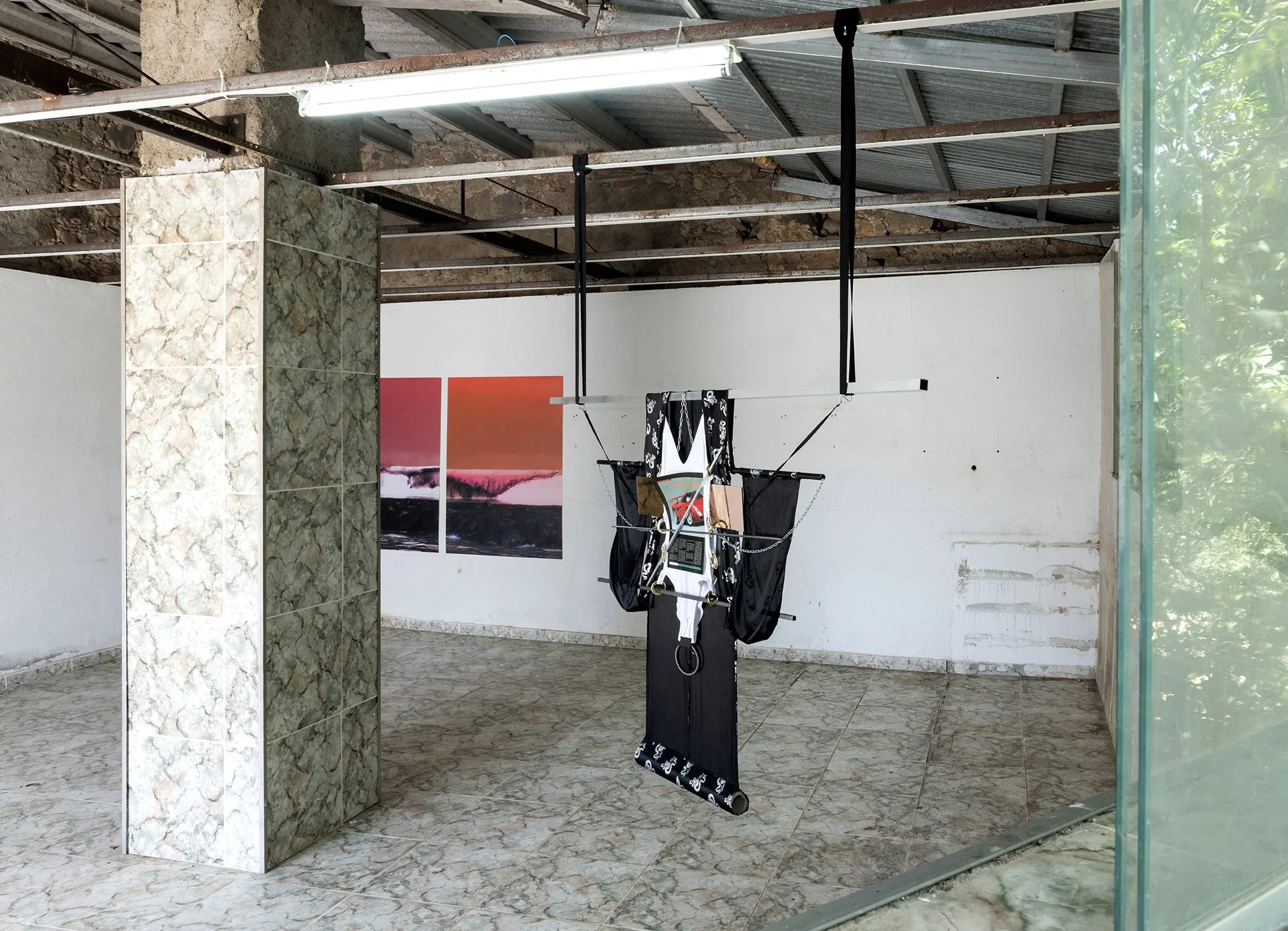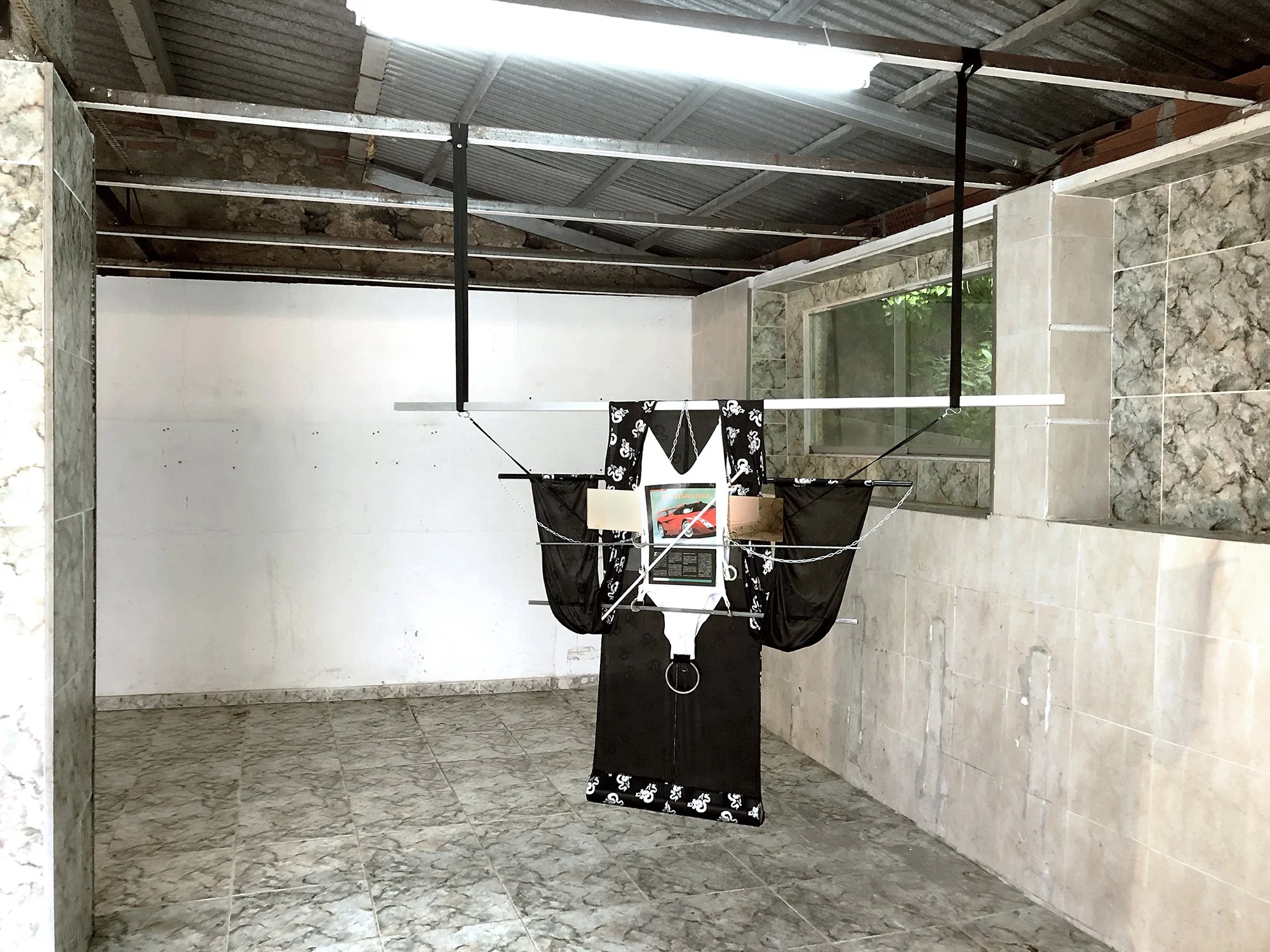SWAMP HORSES
Ulrike Buck, Laia Estruch, Jakub Choma, Monia Ben Hamouda, Michele Gabriele, Kenneth Alme, Kåre Magnus Bergh, Victor Jaenada, Andrew Birk, Pierre Clement, Sahatsa Jauregi, Valerio Nicolai, Josep Maynou, James Lewis, Lucia Leuci, Martin Llavaneras, Estrid Lutz, Jordi Mitjà
15 June · 15 August 2019
Ulrike Buck. Tomato, 2019. Oil and acrylic on linen.
Ulrike Buck. Tomato, 2019. Oil and acrylic on linen.
Ulrike Buck. Tomato, 2019. Oil and acrylic on linen.
Víctor Jaenada. Bacalada y porexpan, 2019. Cod fish, chains and acrylic on polystyrene.
Víctor Jaenada. Bacalada y porexpan, 2019. Cod fish, chains and acrylic on polystyrene.
Víctor Jaenada. Bacalada y porexpan, 2019. Cod fish, chains and acrylic on polystyrene.
Josep Maynou. Blablabla, 2018 & Mhamid, 2015. Wool and cotton.
Josep Maynou. Mhamid, 2015. Wool and cotton.
Josep Maynou. Blablabla, 2018. Wool and cotton.
Josep Maynou. Esto no es música, 2019. Performance. Image by Natália Assis.
Michele Gabriele. It's always so hard to admit that things are different than what we had believed at first sight, 2018. Oil on epoxy clay, steel, cables, glass, rubber.
Michele Gabriele. It's always so hard to admit that things are different than what we had believed at first sight, 2018. Oil on epoxy clay, steel, cables, glass, rubber.
Michele Gabriele. It's always so hard to admit that things are different than what we had believed at first sight, 2018. Oil on epoxy clay, steel, cables, glass, rubber.
Michele Gabriele. It's always so hard to admit that things are different than what we had believed at first sight, 2018. Oil on epoxy clay, steel, cables, glass, rubber.
Michele Gabriele. It's always so hard to admit that things are different than what we had believed at first sight, 2018. Oil on epoxy clay, steel, cables, glass, rubber.
James Lewis. Sagas, 2019. HD Video, 38'41"
James Lewis. Sagas, 2019. HD Video, 38'41"
James Lewis. Sagas, 2019. HD Video, 38'41"
Valerio Nicolai. Siamese twins at the show, 2019. Enamel and clay.
Valerio Nicolai. Siamese twins at the show, 2019. Enamel and clay.
Valerio Nicolai. Siamese twins at the show, 2019. Enamel and clay.
Lucia Leuci + Monia Ben Hamouda. Donna Demone, 2019. Resin, clay, feathers, silicone. Image by Andrew Birk.
Lucia Leuci + Monia Ben Hamouda. Donna Demone, 2019. Resin, clay, feathers, silicone. Image by Andrew Birk.
Martin Llavaneras. Catabolic leaves, 2019. Aluminium, caramel, leaves.
Martin Llavaneras. Catabolic leaves, 2019. Aluminium, caramel, leaves.
Martin Llavaneras. Catabolic leaves, 2019. Aluminium, caramel, leaves.
Martin Llavaneras. Catabolic leaves, 2019. Aluminium, caramel, leaves.
Valerio Nicolai. Sea of shit #5, 2019. Oil on canvas.
Valerio Nicolai. Sea of shit #5, 2019. Oil on canvas.
Valerio Nicolai. Sea of shit #5, 2019. Oil on canvas.
Ulrike Buck. Bauernteller (Farmer Plates) (Heart, Brain, Pain), 2019. High red glazed ceramic.
Jordi Mitjà. Double tongue, 2018. Terracotta & Fossilized hand with seven fingers, 2018. Terracotta. Ulrike Buck. Bauernteller (Farmer Plates) (Heart, Brain, Pain), 2019. High red glazed ceramic.
Jordi Mitjà. Fossilized hand with seven fingers, 2018. Terracotta.
Jordi Mitjà. Double tongue, 2018. Terracotta.
Ulrike Buck. Bauernteller (Farmer Plates) (Heart, Brain, Pain), 2019. High red glazed ceramic.
Jordi Mitjà. Double tongue, 2018. Terracotta.
Kenneth Alme. Das Meer das Meer das Meer, 2019. Oil, water, stitches and print on linen canvas.
Kenneth Alme. Das Meer das Meer das Meer, 2019. Oil, water, stitches and print on linen canvas.
Kenneth Alme. References references references, 2018. Oil and water on linen canvas.
Andrew Birk. Fear Hiding, 2019. Acrylic and watercolor on canvas.
Andrew Birk. Fear Hiding, 2019. Acrylic and watercolor on canvas.
Monia Ben Hamouda. Selfportrait II, 2019. Sea clay, branch. Kåre Magnus Bergh. Hairpiece, 2019. Silk paint on silk.
Monia Ben Hamouda. Selfportrait II, 2019. Sea clay, branch.
Monia Ben Hamouda. Selfportrait II, 2019. Sea clay, branch.
Monia Ben Hamouda. Selfportrait II, 2019. Sea clay, branch.
Kåre Magnus Bergh. Hairpiece, 2019. Silk paint on silk.
Kåre Magnus Bergh. Hairpiece, 2019. Silk paint on silk.
Jordi Mitjà. Copper piss, 2018. Copper and terracotta.
Jordi Mitjà. Copper piss, 2018. Copper and terracotta.
Jordi Mitjà. Copper piss, 2018. Copper and terracotta.
Jordi Mitjà. Copper piss, 2018. Copper and terracotta.
Pierre Clement. Satcon, 2019. Wood, twine, mirrors, Xerox print on bond paper, nails, lemon peels.
Pierre Clement. Satcon, 2019. Wood, twine, mirrors, Xerox print on bond paper, nails, lemon peels.
Pierre Clement. Satcon, 2019. Wood, twine, mirrors, Xerox print on bond paper, nails, lemon peels.
Laia Estruch. Sibina, 2019. Performance. Voice, text, water and trough. Image by Andrew Birk.
Laia Estruch. Sibina, 2019. Performance. Voice, text, water and trough. Image by Andrew Birk.
Laia Estruch. Sibina, 2019. Performance. Voice, text, water and trough. Image by Andrew Birk.
Estrid Lutz. Fading through, Zicatela series, Puerto Escondido, 2019. Digital print on photographic paper. Sahatsa Jauregui. El Hijo de, 2019 Kimono costume, bathing suit, magazine page, iron bars, mirror, chain and cardboard cylinder.
Estrid Lutz. Fading through, Zicatela series, Puerto Escondido, 2019. Digital print on photographic paper.
Estrid Lutz. Fading through, Zicatela series, Puerto Escondido, 2019. Digital print on photographic paper. Sahatsa Jauregui. El Hijo de, 2019 Kimono costume, bathing suit, magazine page, iron bars, mirror, chain and cardboard cylinder.
Sahatsa Jauregui. El Hijo de, 2019 Kimono costume, bathing suit, magazine page, iron bars, mirror, chain and cardboard cylinder.
Sahatsa Jauregui. El Hijo de, 2019 Kimono costume, bathing suit, magazine page, iron bars, mirror, chain and cardboard cylinder.
Sahatsa Jauregui. El Hijo de, 2019 Kimono costume, bathing suit, magazine page, iron bars, mirror, chain and cardboard cylinder.
Lucia Leuci. Newborn, 2019. Resin, stuffing, fabric, synthetic hair, green clay, dried flowers.
Lucia Leuci. Newborn, 2019. Resin, stuffing, fabric, synthetic hair, green clay, dried flowers. Image by Andrew Birk.
Jakub Choma. Off the beaten road, 2019. Laser-etched cork, acrylic paint, chain, river rock, plastic, wood skewers, vacuum-sealed beef jerky, half-eaten pear, blue cheese, sailor’s hat. Image by Andrew Birk.
Jakub Choma. Off the beaten road, 2019. Laser-etched cork, acrylic paint, chain, river rock, plastic, wood skewers, vacuum-sealed beef jerky, half-eaten pear, blue cheese, sailor’s hat. Image by Andrew Birk.
Jakub Choma. Off the beaten road, 2019. Laser-etched cork, acrylic paint, chain, river rock, plastic, wood skewers, vacuum-sealed beef jerky, half-eaten pear, blue cheese, sailor’s hat. Image by Andrew Birk.
SWAMP HORSES
presented by
Altan
In January and February on hilltops, in blastocysts of stone houses with low ceilings slung together, people clump around greasy wood ovens for warmth, animals huddling underneath.
Wintry air marches down the Pyrenees head first into pijo Cadaqués, plate-glass shattering everything into cyan shards, metal signs ripped off their moors, hats flying, dunes eat into jabalí trails in the beachgrass. Coming in like a distant highway, on the tinny pang of church-bells, expanding into all of space, enveloping, rending ancient structures willy-nilly, disheveled.
Barn doors blast open and slap flush against wood frames, glass weather-seals chattering, things peel. Sagebrush haired sweatshirt-wearers squint forever, madly sweeping to fight the sand back and cigarette butts and beer cans and crumpled dusty Kinder wrappers that fly in from the fields and collect in the armpits of one-way streets.
Acrid shit-slurry spread shallowly over fallow surfaces, peanut-buttery reek, a grainy, all-consuming temporary phthisis, overwhelming the entryways of old farmer’s houses, prune-faced poker-players with dead noses. A plume of pigeons rises from an old terra cotta rooftop, does one half of a half turn, a contrail line disseminating into blue vastness.
In the lust-flood of springtime, almond trees lift their skirts, tendrils unfurl and birds gawk in the marshes. On longer days, oversized lemons and lode tomatoes sag off the vine, figs drip purple vinegar, punch drunk wasps and butterflies tumble through sunflowers.
An albino deer agape in the far distance, a permacast tractor path.
One work boot impaled musty and upside-down on a wooden stake, waiting. Evening yellow lingers like perfume in an elevator, too long, painterly, perfect.
Under its spell, stone walls and thousand year doors exfoliate.
Shotgun shells scattered and rustling over the broken marble pathway glinting off towards the downing sun.
Butter white swamp horses chortle to themselves quietly in the muck in the shadow of power lines crossing the wilderness, the moon thick in the clouds.
We came here to imagine kids building forts in the floodplain detritus.
To observe leaves fall from trees, expressionist lichen, a blurry black bodied crow streaks across the plane, time unravels in front of our panting summer faces and wild windy squinting eyes. A time-lapse of matter building up and frothing forth, swelling in assertive dominion, then weathered, receding, bowing justly and blowing away; moment after moment and year after year.
- Andrew Birk
An old home in the countryside that has hosted multiple life cycles: its foundations were already built with the ruins of older buildings, and it has changed in shape, size and function over centuries. Now a fragmented structure, layers pile up, revealing different time periods and domestic histories in one small archeological mess.
Located right next to the village’s church and cemetery, Spirit Vessel is the manifestation of a new life project that begins to ll this structure as a home and workspace. As in all rural areas, once hubs of activity when agriculture was the base and sustenance of life, they went from existing in the time of all-consuming labor, self-sufficiency, and a lifetime dedicated to its own local biological permanence; to the time of production at the beginning of worldwide integrated systems. A return to these empty spaces is taking place, re-appropriating and re-distributing meaning to the context, now from the perspective of a digitalized and globalized generation.
Spirit Vessel is hosting a group of works that celebrate this opening statement with their own approaches on our notions of ourselves in relation to our environmental time. In these works, the time of one human cycle as a measure of nature and historicity clashes with the chronology of the organic and the imprint of mankind’s manipulation of its habitat. Fossils of how we imagine the past to be appear as more accurate to our projection of the world in fictional narratives adjusted to our imagination, than the relevance of truth. Artists play with the mystification and personification of nature in a ritualistic relation with its elements and cycles, they recreate structures, grids and biological architecture, or the erosion and disintegration of materials in a new symbiosis of the organic and the technological over a scenario of an already fully blown ecological collapse. They go back and forth between traditional craftsmanship and processes, and accelerated image circulation. Wild horses in a swamp, oblivious to the violent winds and cohabiting with distant electric lines, provide an idyllic backdrop for this projection of our futures in the new meaning of landscape.
-Sira Pizà
All images by Roberto Ruiz. Courtesy of the artists and Spiritvessel.





